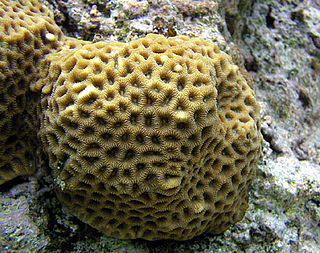
Brain coral is a common name given to various corals in the families Mussidae and Merulinidae, so called due to their generally spheroid shape and grooved surface which resembles a brain. Each head of coral is formed by a colony of genetically identical polyps which secrete a hard skeleton of calcium carbonate; this makes them important coral reef builders like other stony corals in the order Scleractinia. Brain corals are found in shallow warm water coral reefs in all the world's oceans. They are part of the phylum Cnidaria, in a class called Anthozoa or "flower animals". The lifespan of the largest brain corals is 900 years. Colonies can grow as large as 1.8 m (6 ft) or more in height.
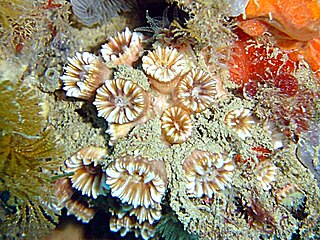
The Caryophylliidae are a family of stony corals found from the tropics to temperate seas, and from shallow to very deep water.

Acanthastrea is a genus of large polyp stony corals in the family Lobophylliidae. The colonies are massive and usually flat. The corallites are either circular or angular in shape. The septa are thick near the wall of the corallite, becoming thin near the columella, and have tall teeth. The polyps are extended only at night.

Cycloseris is a genus of solitary disc corals in the family Fungiidae. They are found in the Indo-Pacific. They inhabit the lower reef slopes, and the areas between reefs with soft sediments. They tolerate turbid waters.
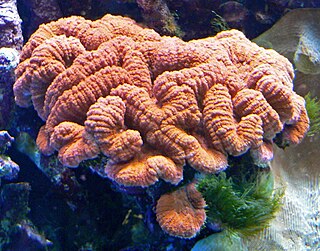
Lobophyllia, commonly called lobed brain coral or lobo coral, is a genus of large polyp stony corals. Members of this genus are sometimes found in reef aquariums.
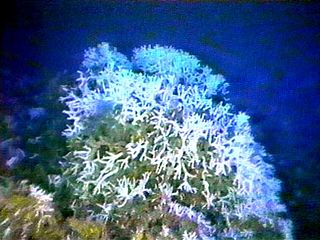
Oculinidae is a family of colonial corals.

Astrocoeniidae is a family of stony corals. The family is distributed across the tropical and subtropical oceans worldwide.

Dendrophylliidae is a family of stony corals. Most members are azooxanthellate and thus have to capture food with their tentacles instead of relying on photosynthesis to produce their food. The World Register of Marine Species includes these genera in the family:
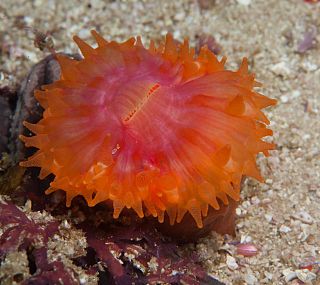
Caryophyllia is a genus of solitary corals in the family Caryophylliidae. Members of this genus are azooxanthellate and are found in the North Atlantic Ocean and the Mediterranean Sea at depths down to 2,670 metres (8,760 ft).

Cladocora is a genus of corals in the order of stony corals.

Echinopora is a genus of stony corals in the family Merulinidae.

Rhizangiidae is a family of stony corals in the order Scleractinia. This family is closely related to Oculinidae. Members of this family are non-reef building corals and reproduce from stolons. The corallites are small and the septa are simple.

Merulinidae is a family of reef-building stony corals.

Mycetophyllia is a genus of stony corals in the family Mussidae, commonly known as ridged cactus corals. Members of this genus are native to the Caribbean area. They are zooxanthellate species and are sometimes kept in reef aquaria.

Montlivaltiidae is an extinct family of stony corals.

Turbinoliidae is a family of reef building stony corals.

Leptastrea is a genus of massive reef building stony corals known primarily from the Indo-Pacific. Although previously assigned to Faviidae, Budd et al. (2012) assigned it to Scleractinia incertae sedis based on phylogenetic results demonstrating the polyphyly of Faviidae.

Heterocyathus is a genus of coral of the family Caryophylliidae.

Madracis is a genus of cnidarians belonging to the family Pocilloporidae. The genus has a cosmopolitan distribution.
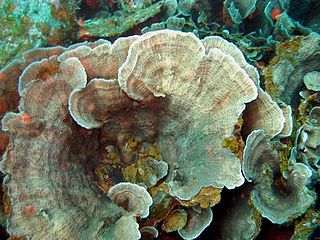
Leptoseris is a genus of corals belonging to the family Agariciidae.






















